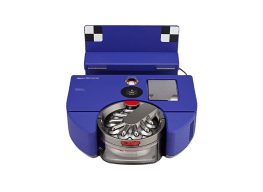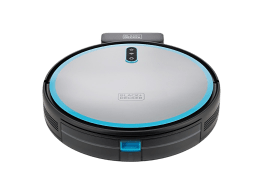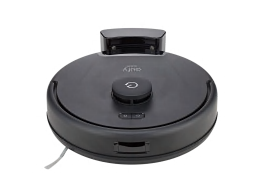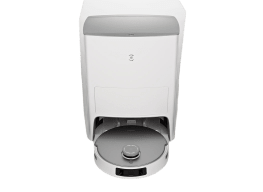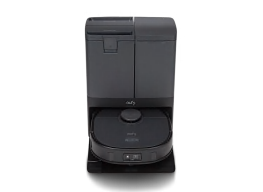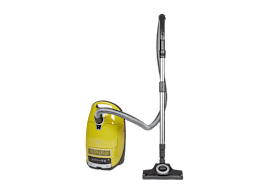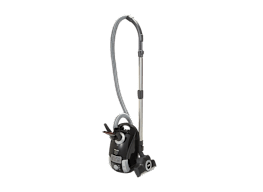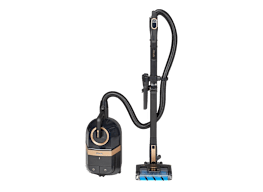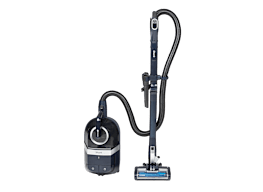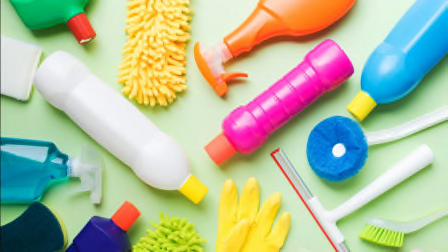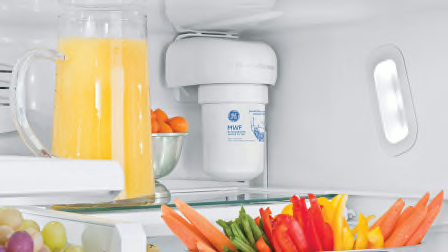Most and Least Reliable Vacuum Cleaners
CR members report on well over 115,000 upright, canister, stick, and robotic vacuum cleaners
When you shop through retailer links on our site, we may earn affiliate commissions. 100% of the fees we collect are used to support our nonprofit mission. Learn more.
Every year we ask our members about the vacuums they own. Are they reliable, and do they make them happy?
We get reams of information on the best and worst brands. Plus, our members give us more valuable insight into what breaks and what’s important to them when buying a new vacuum.
That information helps us decide which vacuums to test and which attributes to test, and it helps us keep abreast of changes in the marketplace.
One of the trends we’ve seen in recent years is that sales of cordless stick vacuums have soared past sales of corded stick vacuums, not only among CR members but also with consumers at large. In fact, 28 percent of the vacuums purchased by our members in 2022 to 2023 were cordless stick vacs, while only 11 percent were corded stick vacs.
And that presents a trade-off. “Our survey ratings show that corded stick vacuums are more reliable, but cordless vacuums are generally more well-liked,” says Martin Lachter, research program leader at CR.
Upright Vacuums
Upright vacuums make up about half of the U.S. vacuum market, according to manufacturers, and they’re the best at deep cleaning carpet, according to our tests.
Our survey ratings cover 18 brands of upright vacuums. Two of the upright brands in our survey, Sebo and Soniclean, earned an excellent rating for predicted reliability, and Kirby and Shark earned a very good rating. (We’ve tested Soniclean and Sebo uprights in the past, but there are no current models from these manufacturers in our latest upright tests.)
There are almost two dozen Shark uprights in our ratings, and you’ll see the best clustered near the top. Most make our recommended list.
Two upright brands—Sebo and Shark—earned an excellent rating for owner satisfaction. Miele, Riccar, and Simplicity earned a very good score on this measure. Our members gave poor owner satisfaction marks to four brands—Black & Decker, Dirt Devil, Royal, and Eureka. And because of their substandard reliability ratings, Consumer Reports cannot recommend either Royal or Eureka at this time.
Here’s a top-performing Shark upright with ratings of very good for reliability and excellent for owner satisfaction. For more choices, see our full upright vacuum ratings.
Canister Vacuums
Canister vacuums are a good choice if you live in a multilevel home because they’re easier to maneuver on stairs, with the powerhead in one hand and the canister on the floor or the stairs. They’re also better at cleaning hardwood floors, according to our lab tests. But with their long hose connecting the powerhead and the canister, they can be bulky and a bit awkward to store in a shallow closet.
Canisters have been losing market share in recent years and now account for just a small percentage of the vacuums consumers buy nationally, according to manufacturers. We continue to test them because brands like Miele and Kenmore are popular with our readers. But 10 percent of the members in our most recent survey who recently bought a vacuum reported buying a canister.
In our survey ratings, canisters generally fare well for reliability. All 15 brands included in our survey ratings are eligible for a recommendation. Our performance ratings currently include three brands of canisters: Miele, Kenmore, and Dyson.
Ratings from our member surveys represent more brands than we currently test. Of the 15, Miele stands out as the only brand to receive an excellent rating for both predicted reliability and owner satisfaction. Of the three other brands that earn an excellent for predicted reliability (Shark, Rainbow, and Filter Queen) only Rainbow earns a very good rating for satisfaction. Shark earned an adequate rating, but Filter Queen was below par.
Of the brands in our tests, Kenmore earned very good scores for predicted reliability and midrange scores for owner satisfaction. Dyson did not fare quite as well, earning middling scores on both measures. And the three brands with unacceptable satisfaction ratings were Hoover, Royal, and Simplicity.
Here’s a top pick from Miele, a brand that earns excellent ratings for both reliability and owner satisfaction. For more choices, see our full canister vacuum ratings.
Stick Vacuums
Unlike canisters, the market for stick vacuums is growing at a fast clip. They represent at least 20 percent of the market, according to manufacturers. They tend to perform well in our tests, and as their performance increases so does the toughness of our tests as we know that some folks buy them as their primary vacuum. (We still recommend full-sized vacuums for homes with a lot of carpeting.)
Consumers like them because they’re easy to maneuver and easy to pull out for random messes. Read on to see how corded and cordless stick vacuums did in our reliability surveys. (Some brands appear in both categories; for example, Shark makes both corded and cordless models.)
Corded Stick Vacuums
Three of the eight brands covered in our survey ratings earn an excellent rating for brand reliability: Shark, Miele, and Bissell. But owner satisfaction is a mixed bag. Shark gets a very good satisfaction rating and the other two brands get a middling rating.
Oreck earned a very good score for reliability but the remaining four brands received rated midrange scores. The owner satisfaction ratings for this group are a bit lackluster, ranging from good for Bissell and Miele, to poor for Black and Decker and Dirt Devil. That said, all brands in our survey are eligible for a recommendation if they perform well enough in our tests.
Here’s a top pick from Shark, a brand that earns an excellent rating for predicted reliability and a very good rating for owner satisfaction. For more choices, see our full corded stick vacuum ratings.
Cordless Stick Vacuums
In contrast to corded stick vacs, none of the 11 brands of cordless stick vacs covered in our survey ratings earn more than a middling score for predicted reliability. Four brands earn a below par rating and one scores a poor.
Currently, no cordless stick vacuums make our recommended list, including those that are top-performers in our vacuum lab tests because of reliability issues with the cordless stick vacuum category overall.
Despite their iffy marks for reliability, two brands get high marks for owner satisfaction. Dyson and Shark both notch a very good. Five other brands earn a middling score and two others get only fair satisfaction scores. Two, Dirt Devil and Kenmore, get the worst satisfaction scores, poor, and Kenmore also ranked poorly for reliability. (In our performance tests, Kenmore’s scores were also subpar.)
What, specifically, are the problems CR members found with their cordless vacuums? Two words: battery life. Many owners complained that the batteries were never good to begin with or that battery life diminished over time, especially after the second year of ownership.
Here’s a look at a top-rated Shark cordless stick vacuum from Consumer Reports’ lab tests. For more choices, see our full cordless stick vacuum ratings.
Robotic Vacuums
We were able to rate seven brands of robovacs, and all but one—Neato—were good enough to be recommended when they perform well in our lab tests. Shark rose to the top with an excellent rating in reliability and a midlevel score for satisfaction. Eufy received very good ratings on both measures, and iRobot earned a very good reliability rating but, like Shark, only a midrange score for owner satisfaction.
Although bObsweep and Samsung can be recommended because of their passing predicted reliability ratings, they fell short in owner satisfaction, with bottom-tier ratings.
Here’s a peek at our top-rated robotic vacuum. For more choices see our full vacuum ratings and recommendations.
Most Common Problems
Nonrobotic Vacuums
The most common problem was hair tangling in the rollers. Overall, 17 percent of vacuums have had this problem, with upright models (20 percent ) being especially prone to entanglements. It was also a major problem for corded stick vacuums (16 percent), cordless stick vacuums (14 percent), and canister vacuums (13 percent).
Other notable problems that could be found in any type of vacuum included clogged dirt receptacles (10 percent), weak or broken suction (8 percent), and the need to clean the filters too often (6 percent). Additionally, 7 percent of upright vacuums had broken belts.
While these problems also plague cordless vacuums, a trio of battery issues predominated: The battery life got worse over time (15 percent), batteries died completely (10 percent), and battery life was never good to begin with (7 percent).
The battery-related problems tended to get progressively worse over time. We found that one 1 in 4 cordless vacuums—27 percent— experienced deteriorating battery life by the fifth year of ownership—nearly a sevenfold increase over the rate in the first year of ownership. There was a similar trend with batteries dying, and we saw a slight bump in complaints that batteries were never good to begin with, but it was not as dramatic as the other two battery issues. The high incidence of problems underscores our decision to remove the eligibility for a recommendation for cordless models, no matter how well they perform in the lab.
Robotic Vacuums
Like their nonrobotic kin, the biggest problem for robotic vacuums is hair getting tangled in the rollers. Nearly 1 out of 3 robovacs (31 percent) have had this problem. Three other problems each affected 11 percent of robovacs: excessively dirty filters, clogs in the hoses or receptacles, and deteriorating battery life.
This year, for the first time, we asked about two internet-related problems for robotic vacuums: WiFi connection problems and problems with the app or online functions. Each of these problems has occurred with 8 percent of robotic vacuums. We will continue to track this in future surveys.
Brand Loyalty
We also measured brand loyalty, the importance members place on buying a new vacuum from the same brand as their current vacuum. It was considered very important to 23 percent of vacuum owners and somewhat important to 38 percent.
The most brand-loyal were the owners of Miele vacuums, with 41 percent saying it was very important and 36 percent saying it was somewhat important. Brand loyalty was also important, although not quite as important, to Dyson and Sebo owners, with 66 percent saying it was either very important or somewhat important. And about two-thirds of the owners of Shark, iRobot, and Oreck models said it was either very or somewhat important to buy that brand again.
Owners of Kenmore, Hoover, Samsung, LG, and Eureka were far less enthusiastic about sticking with the brand, but the least brand-loyal were owners of Black & Decker and Dirt Devil.
Our survey team reports that 91 percent of the vacuums purchased by our members since 2013 are still in use. Six percent were replaced because of reliability problems.

















